From the ![]() Sweets Issue
Sweets Issue
They arrived each year in mid-December like magic. Huge enamel tins in shades of red, green and gold, decorated with cobblestone streets lit by the glow of gas lamps shining on freshly fallen snow. I would sneak into the kitchen when no one was looking to crack open each tin and gaze inside, marvelling at the perfectly packed concentric circles of cookes, each nestled into its own paper wrapping. They came in seemingly endless varieties: shortbread with chocolate feet, disks rolled in sprinkles, snowflakes frosted in shimmering white, crackly dough blossoming around Hershey’s kisses.
My paternal grandmother sent these cookies out every year to her children and grandchildren across the country from her kitchen in Wisconsin. I know very little about Wisconsin. I’d met my grandmother maybe four times; she rarely visited my dad and I’d only been to her house for my grandfather’s funeral when I was very young, and one family reunion I foggily remember. Stories I had heard of her painted her as the backbone of the family, a true WASP living into her Dutch/German roots and strong Midwestern values. She loved her family fiercely, often to the point of being controlling. She never seemed to like my mother. For most of my childhood the talk of my grandmother was of her failing memory—her small steps and then long strides into the fog of alzheimer’s. The cookie tins brought with them my father’s own precious memories of his childhood, little snippets of family history I so rarely heard. Stories of exotic Midwestern treats like “butterhorns” and his harrowing trips to the root cellar for home-canned jams and vegetables preserved for the winter.
These tins of sweet treats connected me to family I never got to know. The kind of tribe that gathers in a big functional group around a holiday table, celebrating the season together. The family I knew was scattered across the country, often at odds over whatever mysterious things adults fought about.

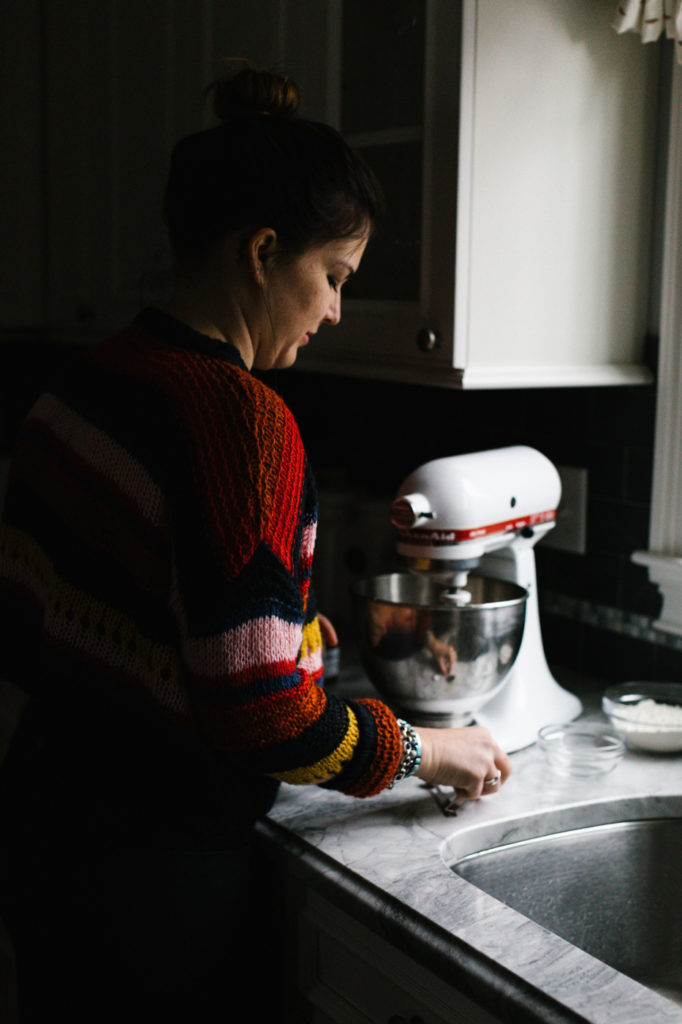
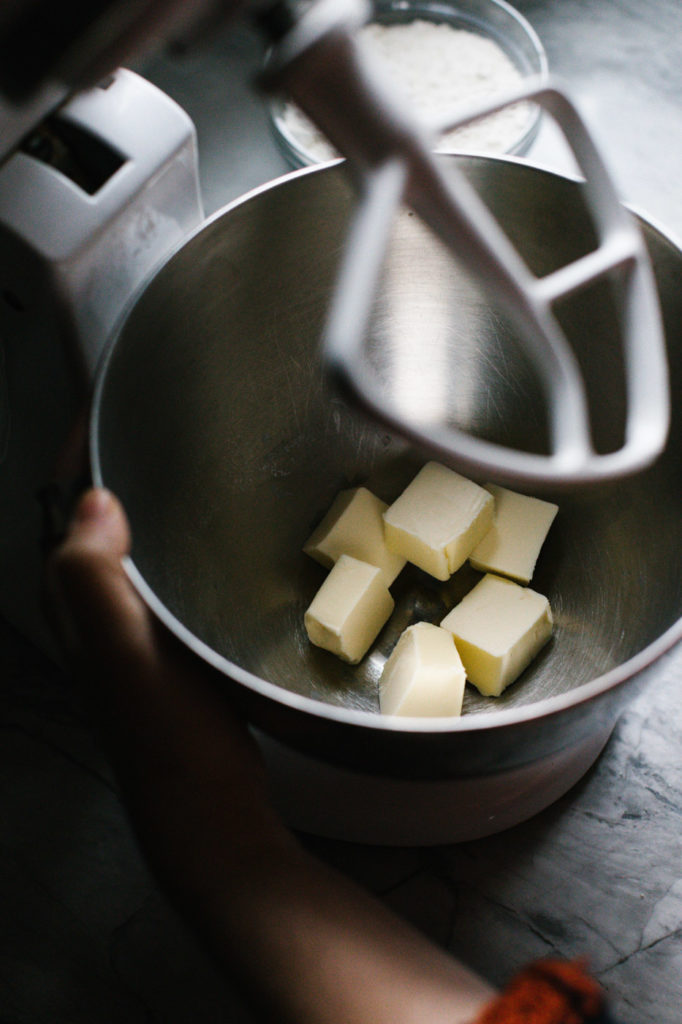
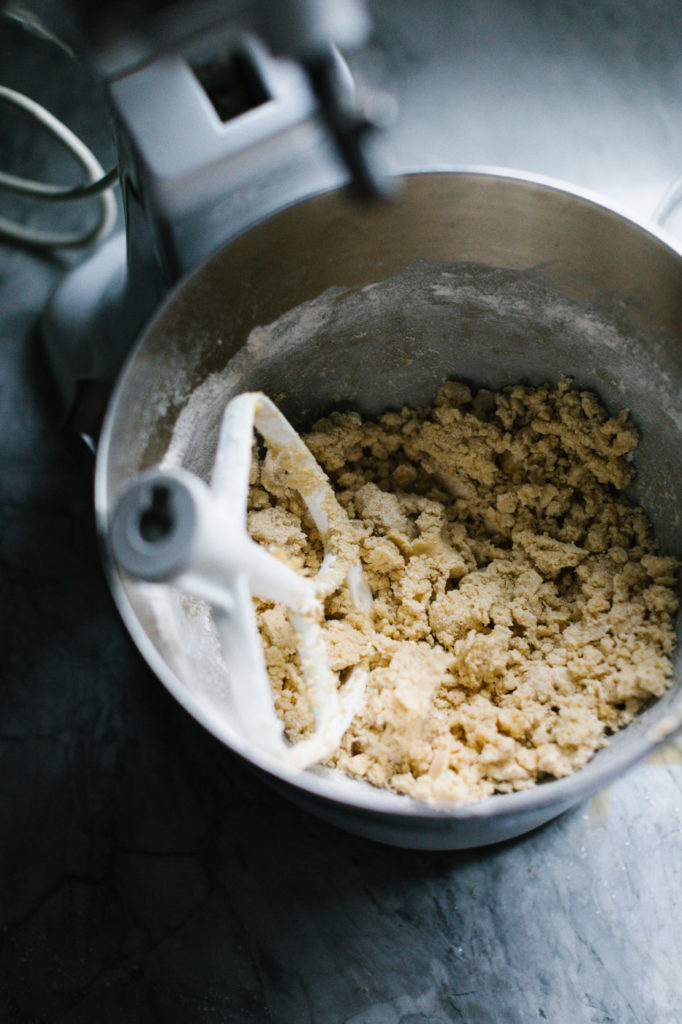
Christmas cookies, like my grandmother, are solidly Midwestern, originating in her ancestral homeland. Holiday cookies were part of winter solstice gifting traditions across Europe in the Middle Ages, but Germans are generally considered responsible for the tradition of Christmas cookies; they hung elaborately decorated gingerbread shapes on their trees. Gingerbread guilds had strict rules preventing in-home baking that were relaxed during the holidays, which made Christmas cookies all the more special. Even without these restrictions, ingredients such as butter, lard, sugar and holiday spices were usually accessible only to royalty. They were luxuries far too expensive for the common household to use more often than once a year.
Dutch and German settlers brought their Christmas cookie tradition, and the valuable technology of the cookie cutter, to America when they arrived and settled predominantly in the Midwest. The first recording of American Christmas cookies is in Amelia Simmon’s American Cookery from 1796, which is often considered America’s first cookbook. Her final instructions in her recipe for “Christmas Cookeys” read, “tho’ hard and dry at first, if put into an earthen pot, and dry cellar, or damp room, they will be finer, softer and better when six months old,” betrays the value of baking cookies during the Christmas season, rather than pies or cakes, which were far more common at the time. During the holiday season, when family and visitors could arrive at any moment expecting festivities (and treats), it was easy to bake and store cookies in order to have something to offer to whomever might stop in.
This year, I decided to revive the tradition of my grandmother’s Christmas cookies from my own apartment. I called an aunt I barely know and asked her for the recipes. I assumed such texts would be preserved in some beautiful book or decorated recipe box passed down after her death, so I was surprised when I received simple snapshots of handwritten notes on various cards and scraps of paper two days later.
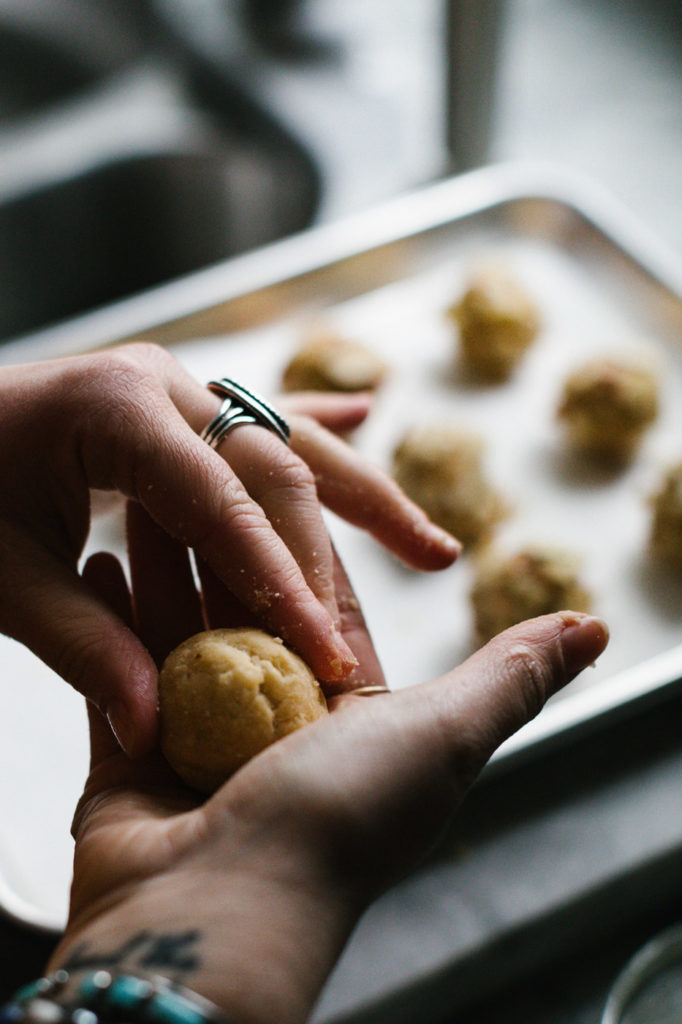
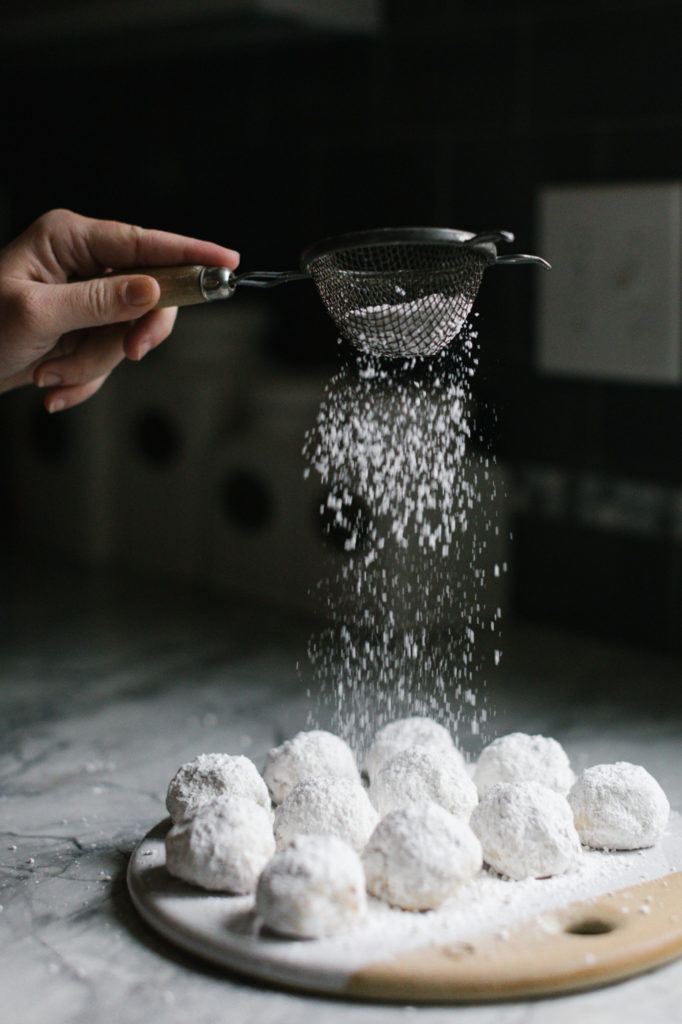
The recipes were sparse. They had few, if any, directions. They were mostly just lists of ingredients, baking temperatures, and times. I was unsure before baking each one how many cookies to expect. These recipes were not the narratives I was used to reading on food blogs and in magazines, there were no personal headnotes, no tips for beginners. They weren’t written for me. They were notes to self, reminders of the particulars of tablespoons, time and temperature to take her through until muscle memory kicked in and the tins basically filled themselves.
I took these notes into my cramped and yellowed apartment kitchen. I creamed butter in my hand-me-down stand mixture, guessed at missing measurements and sizes for each batch, and simply made up other details. Isn’t that what makes cookies so wonderful though? They can be rolled in nuts or powdered sugar, topped with sweet kisses, filled with exotic spices or familiar flavors. In a few hours my house smelled of crackled brown edges and creamy dough just chilled, and my countertops were lined with neat rows of sugared soldiers, ready to be packed away into tins of their own. I wondered when my grandmother started making her Christmas cookies. Maybe my father helped her when he was young. Maybe she started long before she had a family, helping her own grandmother, or baking for friends as a young woman. I wonder if she negotiated a cramped galley kitchen, like me, before being able to spread across stretches of suburban kitchen countertops.
I packed my cookies into tupperware. There is no space in my cabinets to store seasonal tins. They were not individually wrapped, but precariously balanced in layers divided by parchment paper. However, they were buttery and sweet, boasting shades of white and gold and raspberry red. They puffed clouds of powdered sugar just as I remembered. I have a lifetime to master the details, to make my own notes in the margins of the recipes and find my own favorite flavors. For now, I’ll continue to cream butter and sugar, and go from there.
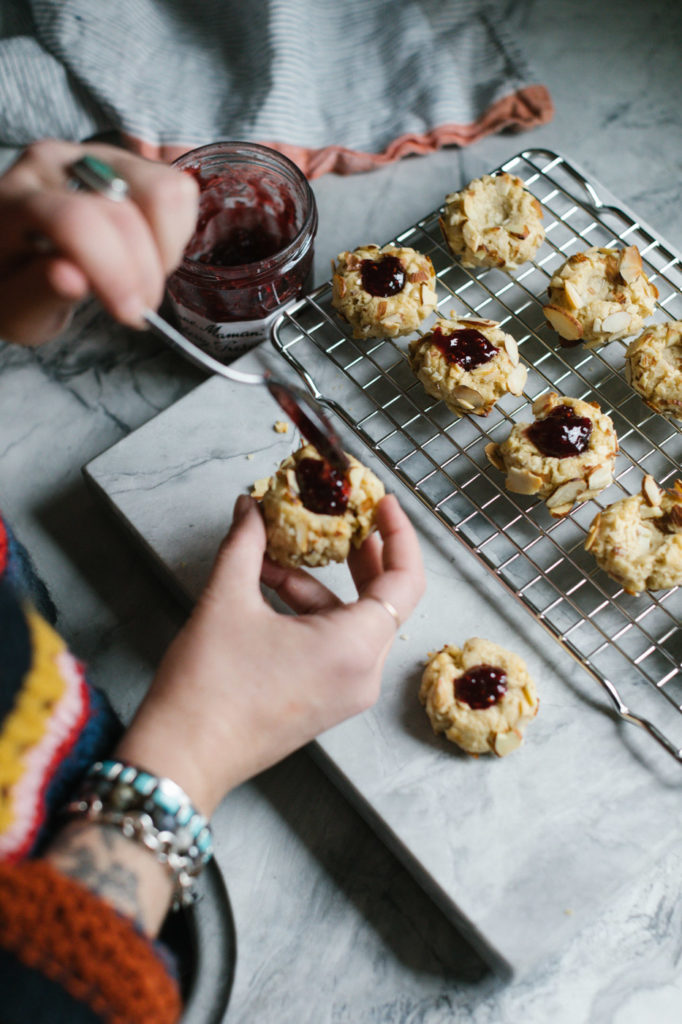
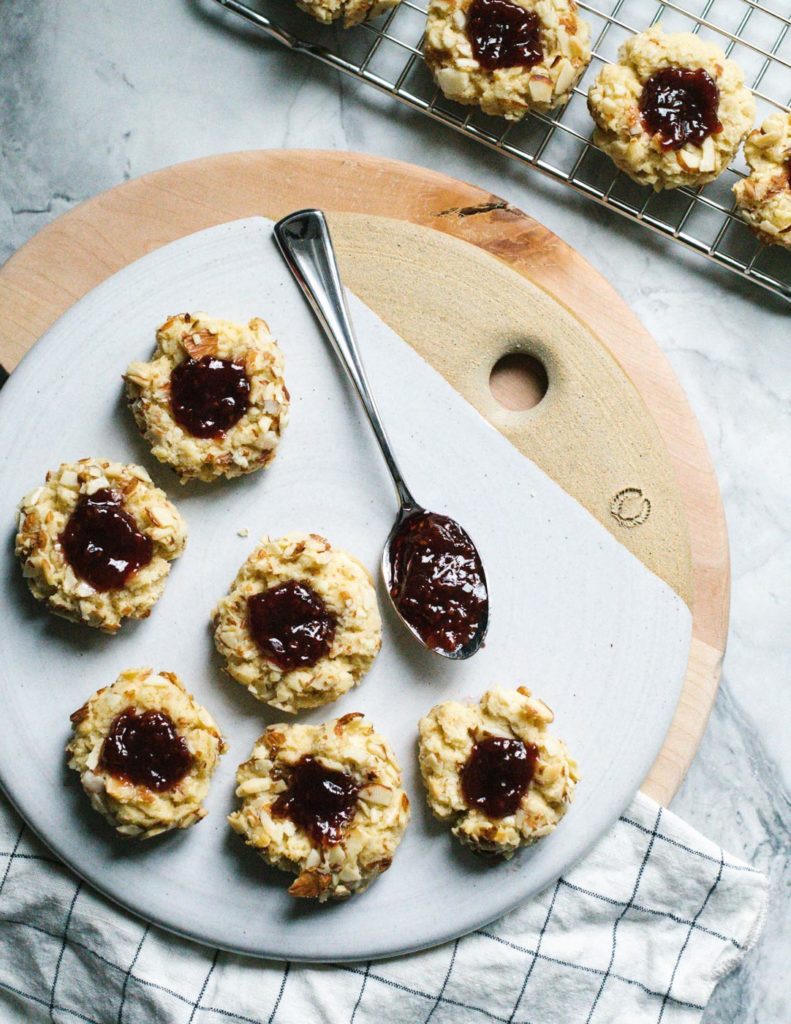
Recipe
Thumbprints
Makes 1 dozen cookies
Ingredients:
- ½ cup (one stick) butter
- 1 egg, divided
- ½ tsp vanilla
- ¼ cup brown sugar
- 1 cup flour
- ¼ tsp salt
- Crushed nuts of your choice
- Frosting or jam
The light sweetness of these nutty cookies compliments the filling of decadent frosting (if you follow my grandmother’s original recipe) or tart jam (if you follow my interpretation).
Method:
- Mix butter, egg yolk, and vanilla together. Add in sugar, flour and salt.
- Shape dough into 1-inch balls. Dip into reserved egg white and roll in crushed nuts until fully coated.
- Bake at 375 degrees for 5 minutes, then make a thumbprint in the middle of each cookie.
- Bake for 8 minutes. The cookies will still be soft, but beginning to brown around the edges.
- Cool completely. Fill thumbprint depressions with jam or frosting.
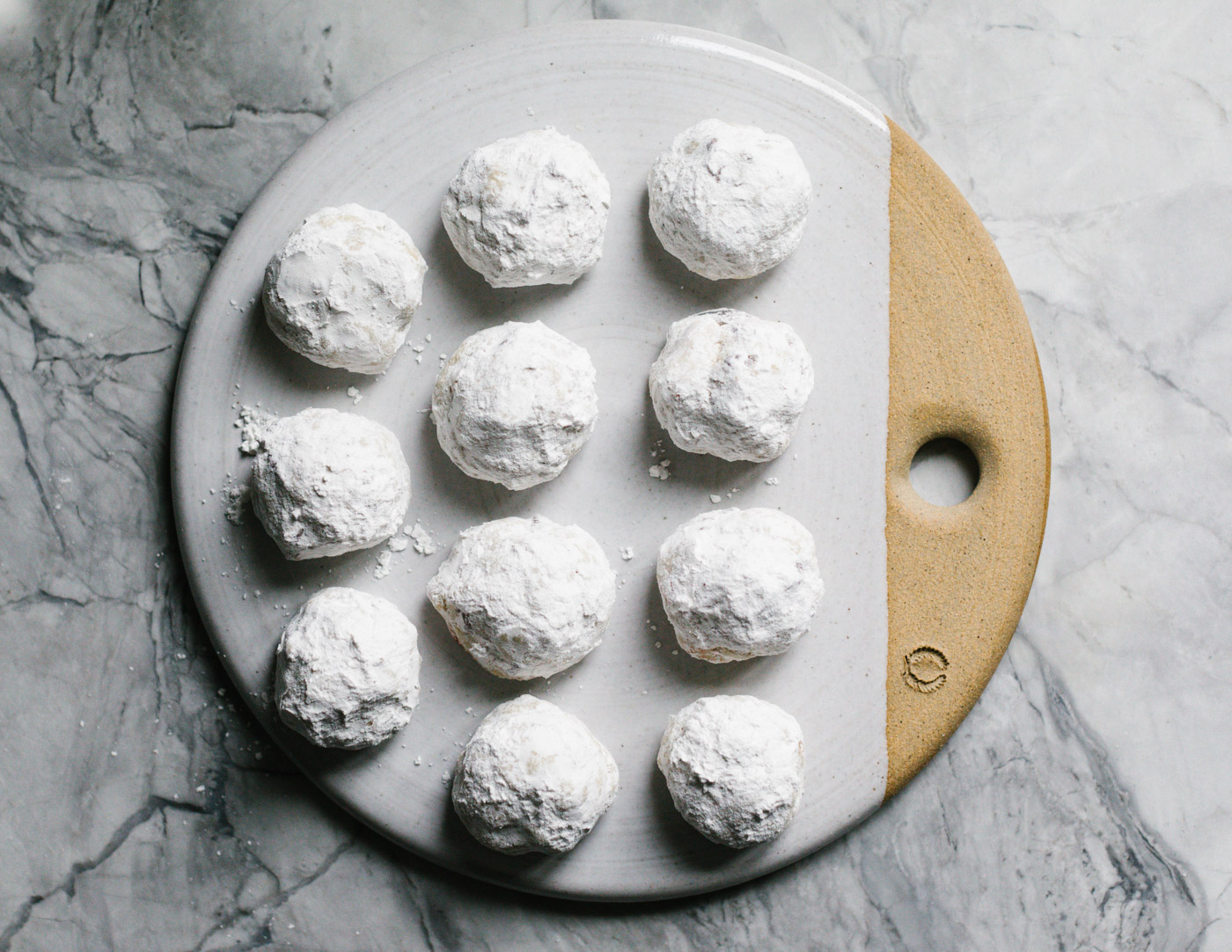
Recipe
Mexican Wedding Cakes
Makes 20 cookies
Ingredients:
- 1 cup butter, softened
- ½ cup powdered sugar, plus more for rolling
- 1 tsp vanilla
- 2 ¼ cups flour
- 1/4 tsp Salt
- ¾ cup chopped pecans (or any nut you’d like)
These cookies evoke not only memories of my grandmother, but also making Christmas cookies with my childhood best friend. Her family called them “Pecan Sandies.” They speak straight Christmas, not only because they look like snowballs when finished, but because their crumbly, buttery, texture feels luxurious enough for the holiday.
Method:
- Cream butter, sugar and vanilla. Slowly add in flour and salt until a loose, crumbly dough forms. Mix in pecans.
- Chill dough for at least 2 hours, then shape into 1-inch balls.
- Bake at 400 degrees for 10 minutes.
- Allow cookie to cool some, but while they are still warm roll in powdered sugar* until each ball is lightly dusted all the way around.
*If you’re really feeling festive, adding icing glitter to your powdered sugar makes the snowball effect of these cookies especially beautiful.





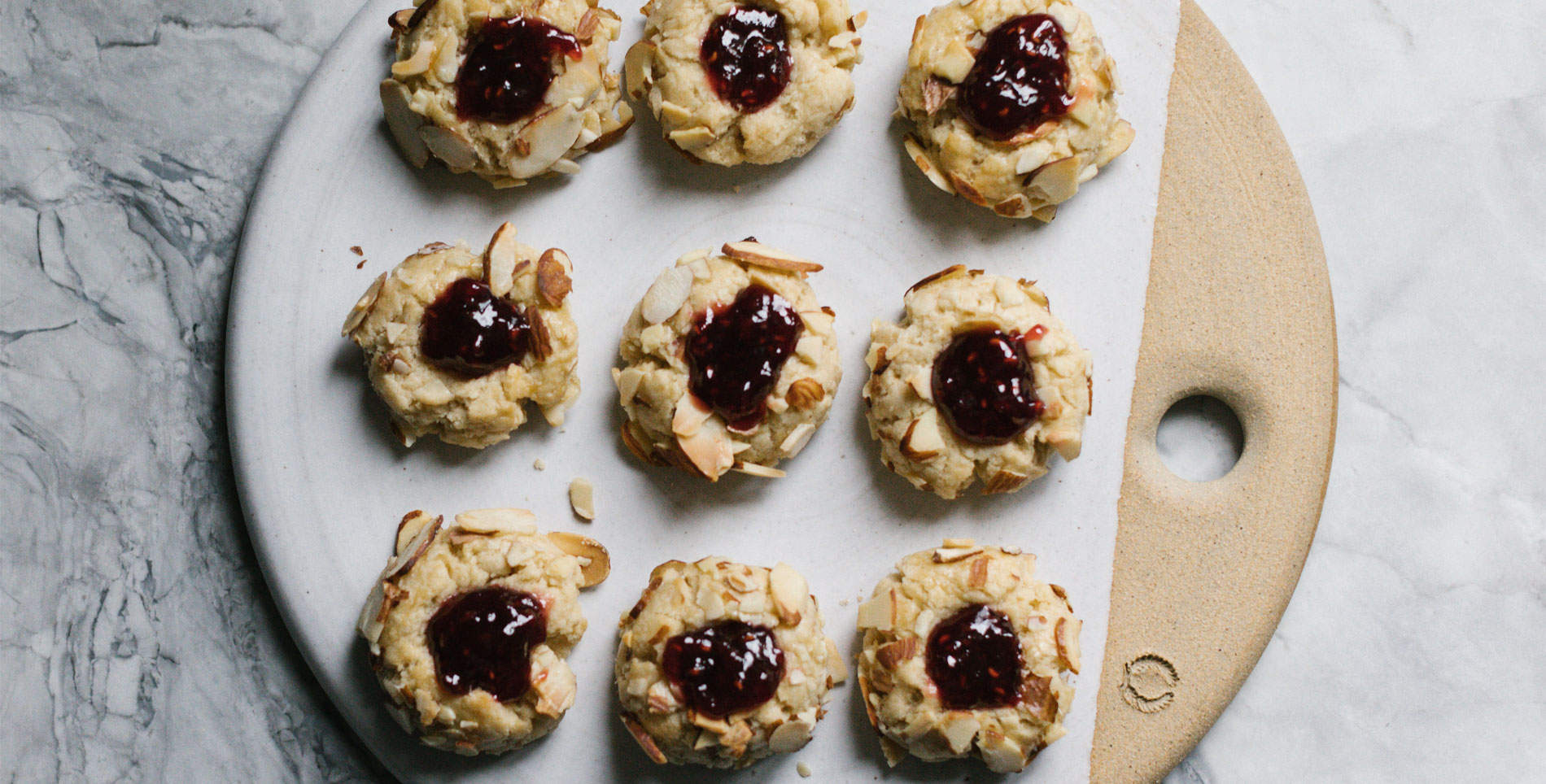

Our comments section is for members only.
Join today to gain exclusive access.